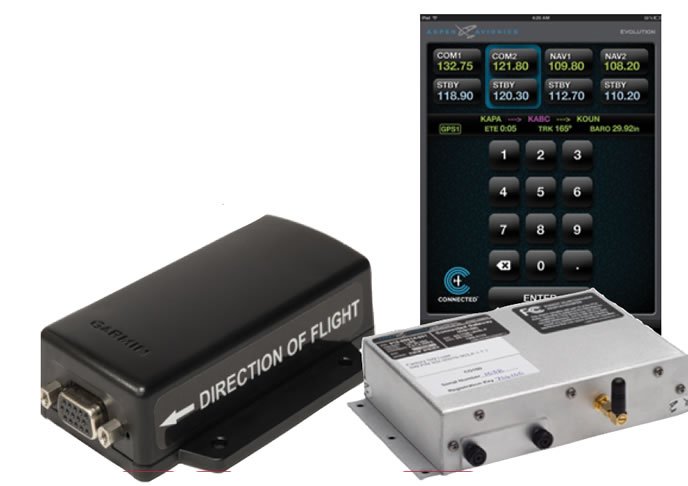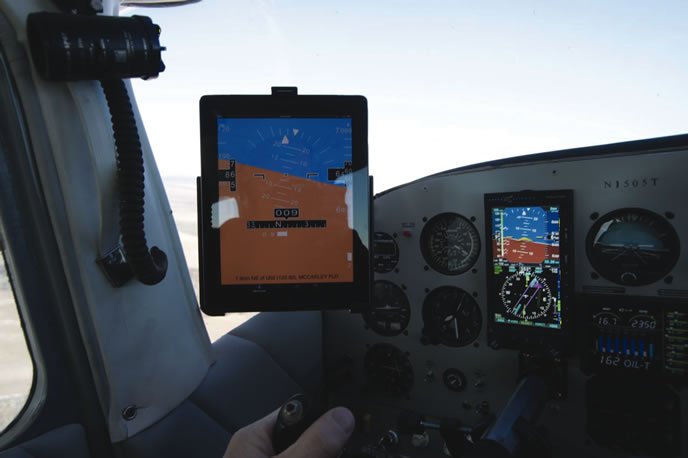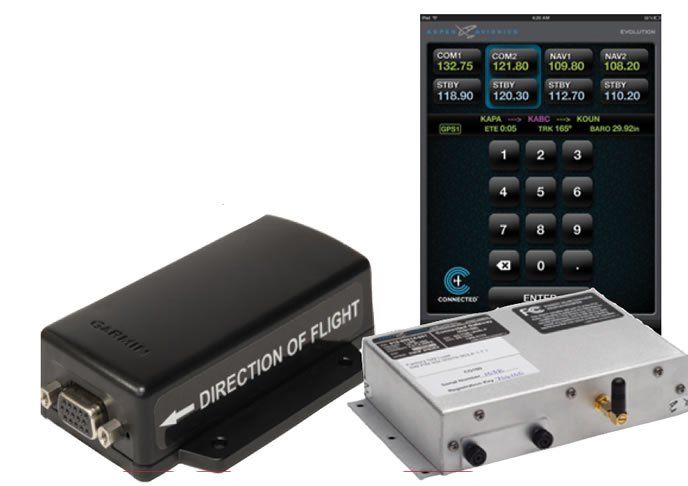That brand-new, touch-screen GPS navigator in your panel? It’s obsolete. Oh, it’s got the latest WAAS GPS receiver and more processing power than its forebears, and it’ll tackle any navigation task from an ILS to a holding pattern to a complicated departure procedure, But its display likely is a generation or two removed from what anyone can buy today in the form of a smartphone or tablet computer.
The lead times involved in designing and certifying the box in your panel mean a consumer-grade tablet’s display is hands-down better and always will be. That’s the electronics business. And since a new tablet likely won’t replace certified glass in the near future, the trick is connecting the panel to the better display on the tablet and using it to enhance situational awareness. From it’s introduction, the iPad, its offspring and their competition, along with some innovative software developers, have revolutionized how we obtain, depict and use situational awareness data in the cockpit.

Connectivity
It’s ironic that Apple’s iPad has been one of the best things to happen to the avionics industry since GPS. And it didn’t even take five years. From full-featured electronic flight bag apps to standby attitude indicators and more, the in-cockpit software available on tablets and smart phones has revolutionized the way we fly. One of the complications, however, is connecting our installed avionics and the data they generate to the tablet’s superior display.
In a perfect world, installed avionics might be built without displays. Instead, they would incorporate a receptacle for mounting a standardized consumer-grade display panel or tablet. As processing capability and display quality improves over time, the latest and greatest could be popped in and off we go. That’s not likely to happen, so we’re left with the need to connect current and future tablet generations to our installed boxes. And we need to do it over 20 years, a nominal lifespan for avionics.
Apple itself in 2012 highlighted the need for a universal connection between the aircraft and the tablet when it replaced its standard 30-pin connector with an eight-pin design dubbed Lightning. All of a sudden, installed cabling designed to accommodate Apple’s original connector for in-flight entertainment, power, cabin control and even Class 2 electronic flight bags was rendered incapable of connecting to the latest and greatest devices. Pity the poor first officer who had to tell the Gulfstream owner his new iPhone wasn’t compatible with his older airplane.
Clearly, a connection method designed to prevent obsolescence s necessary, and it makes the most sense for it to be wireless, either WiFi or Bluetooth. Both have their pluses and minuses, and both are common aboard consumer devices. They’ll likely be in widespread use well into the future. And once the installed avionics go wireless, some interesting things can happen.
A good start
In fact, an installed wireless interface in the typical piston-powered airplane isn’t new or even that unusual anymore. Garmin arguably was first to offer WiFi as an option for its G1000 glass panel, allowing direct download of the system’s operational data for automated storage and analysis. Other manufacturers of certified avionics offer WiFi connectivity for their installed equipment—including Aspen, Avidyne, FreeFlight Systems and L-3 Avionics—and more are sure to jump on that bandwagon. Bluetooth also is becoming more ubiquitous in the cockpit, having gotten a foothold some years back to facilitate audio programming into headsets.
But true long-term and universal solutions—if there are such things—need to consider ways to prevent obsolescence on the portable side amid rapid advancements. The logical progression from all this new-found connectivity and interoperability isn’t to offload onto an iPad the navigation, communication, surveillance or flight control tasks certified avionics perform. Those functions likely will remain the province of certification and FAA approval, at least in the IFR system. But the installed avionics increasingly will need to communicate their data to a portable, non-certified device running appropriate software.

Decisions, Decisions
All of this might not be anything but of passing interest to many pilots and aircraft owners. Others, especially those eying significant avionics upgrades as they plan equipping for ADS-B compliance, would do well to keep wireless connectivity in mind when deciding on their purchases. If for potential resale value alone, ensuring a go-places personal airplane won’t lag too far behind the future’s cutting-edge portable devices and displays will pay dividends as more and more innovative applications are developed for tablet computers and the airplanes they’re used in.
The good news is the name-brand avionics manufacturers—and even those who want to become major industry players but aren’t quite there yet—all offer some form of wireless connectivity to their products. Input capabilities may be limited—changing frequencies, for example, or uploading flight plans—but that’s changing. And it’s really all about leveraging the consumer device’s better display for moving maps, weather and traffic—situational awareness—anyway.
In our view, guarding against being saddled with an obsolete interface to your panel or inability to display ADS-B In data when consumer-grade products undergo inevitable changes means opting for wireless connectivity when upgrading your avionics. Ensuring your installed equipment can wirelessly connect to your preferred displays will help prevent those expensive trips to the avionics shop.




